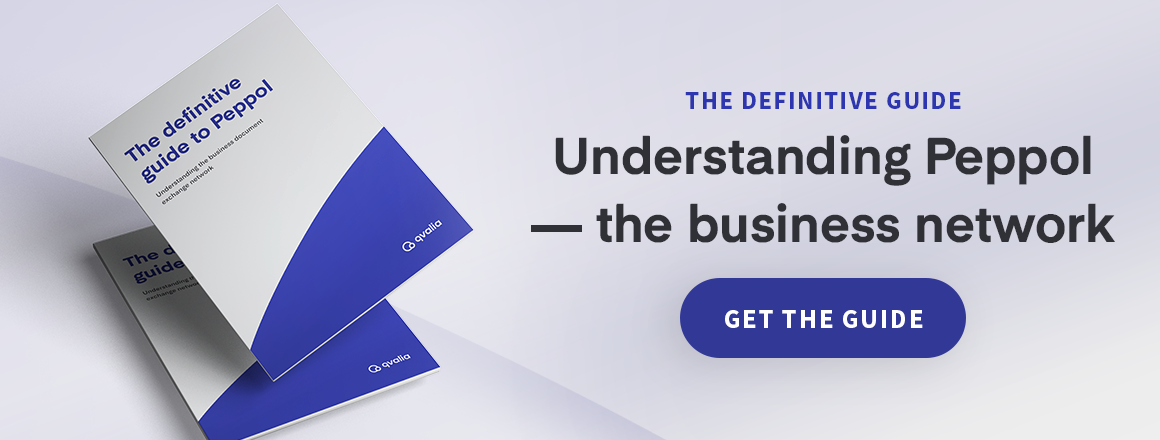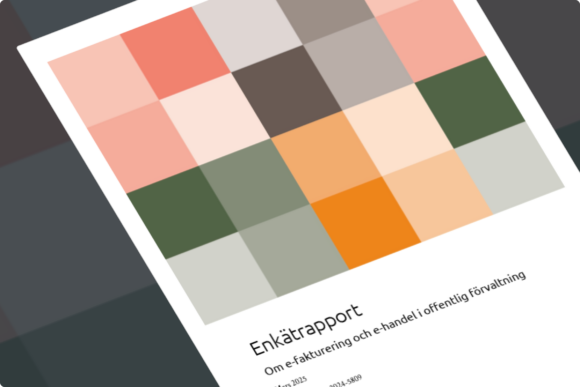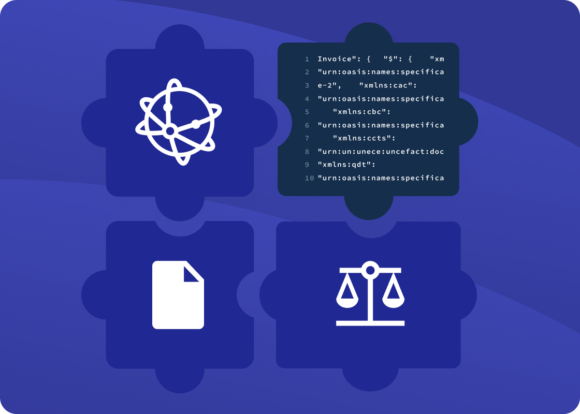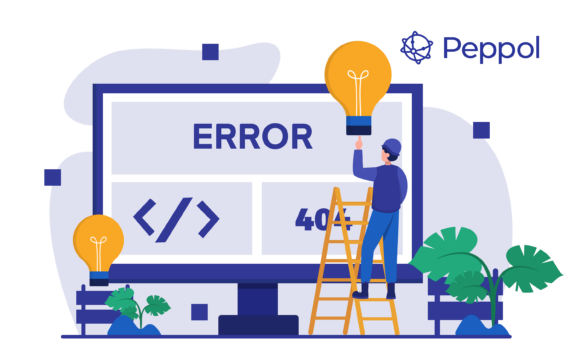
In most cases, you need access to an invoice operator network to send or receive e-invoices. Here’s what you need to know about open and closed e-invoice networks, how to choose a network for your business, and what the traditional e-invoice network operators don’t want you to know.
Invoice operator networks: the infrastructure of e-invoicing
Many countries and regions have so-called operator networks to exchange electronic invoices and other transactional documents between companies and organizations.
The networks are essentially collaborations—links—between service providers enabling access to various e-invoice networks. These companies are called e-invoice operators, or sometimes VAN services or VAN operators (Value Added Networks).
To send e-invoices from a company to another organization, locally or internationally, the senders’ and receivers’ invoice operators need to get in touch and usually set up a conversion script to make the e-invoice manageable in the recipient’s system.
Besides allowing the exchange of electronic documents, customers to e-invoice operators can sometimes also utilize additional value-adding services, such as tools to support accounts payable processes, approval workflow, and more.
It is often a strong selling point with customer benefits such as increased digitization, increased efficiency in the finance process, and reduced environmental impact.
The traditional invoice operator setup
The traditional invoice operator networks can be characterized as closed networks. The setup is managed so that the e-invoice operators are gatekeeping intermediates in the exchanges between their customers.
Here’s why:
To send and receive messages within any e-invoice network, both sender and receiver of the e-invoice must separately have an agreement with an e-invoice operator.
In traditional networks, invoice operators connecting two business partners must correspond to set up an interlinking communication between their respective operators. It is often a time-consuming process, including various tests and manual validations. In the end, this procedure adds to the costs for customers of traditional e-invoice operator solutions.
The situation has been similar across the globe. Let’s take Sweden as an example: Svefaktura has traditionally been the most common format within the local operator network in Sweden since the government-initiated launch in 2005.
The 13-digit GLN number has commonly been used as the inbox address, an organization-specific e-invoice address for a company or organization that has implemented e-invoicing, called an identifier.
Svefaktura is based on UBL, Universal Business Language, a widespread global XML data standard for business documents. There are, however, plenty of other format standards using or not using UBL, for example, OIOUBL in Denmark and Finvoice in Finland, to name a few. The data format and standard define how the e-invoice should be set up, such as line items, header information, and more. If you have an ERP set to process Svefaktura, you can’t seamlessly manage OIOUBL, and vice versa.
How Peppol is changing the operator landscape
In the last few years, the traditional e-invoice landscape has changed radically.
In 2019 Peppol, an open network to exchange electronic documents has simplified e-invoicing significantly for all types of organizations and has quickly become a new standard. While the lowered cost and ease of use have benefited most organizations, e-invoicing has become especially accessible for small and mid-size businesses.
Peppol was initiated by the European Commission, foremost to serve the global needs of interoperability and efficiency in e-invoicing and besides the European Union, new countries are continuously being connected. Australia and Singapore are just a few recent nodes.
The catalyst for the recent development is the EU Directive 2014/55/EU; the entire public sector within the European Union is now required only to accept e-invoices and must be able to receive invoices through the Peppol network.
Regulators across Europe have been active in accelerating the transition towards Peppol and open networks. The recommendation is clear; switch to Peppol and inform your customers and suppliers of the new routine.
In Sweden, DIGG, The Swedish Agency for Digital Government, and SFTI, a public sector joint digitization initiative handling the standard for Svefaktura, have decided to stop supporting Svefaktura from 1 April 2021 ultimately and recommend a transition to Peppol as an e-invoice format. Authorities in other EU countries are moving in the same direction with their respective local networks and formats.
Peppol: the open e-invoice network
Peppol differs from other networks by being an open network, not depending on local invoice operators’ interoperability.
Companies and organizations can quickly exchange e-invoices and various other e-documents via their Peppol Participant Identifier, called Peppol ID. No operator agreements, setups, or conversions are needed for the exchange to take place. The only thing needed is access to a Peppol-certified Access Point. Invoices can easily be created and received in the invoice management software, via ERP integrations, or both.
How Peppol differs from traditional networks
Peppol is disruptive on several levels—which is not necessarily welcomed by all actors.
Local invoice operator networks have strong incentives to advocate their specific local format instead of Peppol.
The reason is strictly commercial—significant revenue streams for traditional e-invoice operators come from maintaining closed networks. In Peppol, no agreements are required between sender and recipient or operator. The only thing needed is the address, the Peppol ID, for transactional documents to be exchanged.
There are no fees between the parties within the Peppol network, but operators and recipients of Peppol e-invoices may charge each other according to EU regulations.
Users of Qvalia can sign up for free and register one or more addresses within minutes. Sending and receiving e-invoices is also free of charge.
Compared to the old local network structure, Peppol is a leap forward and good news for companies aspiring to take their digital transformation further.



